This EarthCache aims to give a bit of history about the Church and then the Geological learning element isabout sandstone and weathering.
St Philips Church Earls court Road
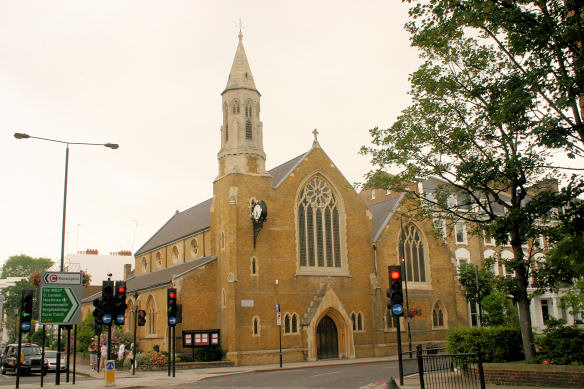
The church was consecrated by the Bishop of London on 1 May, St Philip’s Day in 1858. The first Vicar was Joseph Claxton, the Curate at St Barnabas.
The Church is constructed of Sandstone and yellow brick.
Sedimentary rocks are types of rock that are formed by the build-up of deposits of small particles of mineral or organic particles on the floor of seas or other bodies of water at the Earth's surface. These then “cement together”. Sedimentation is the collective name for processes that cause these particles to settle in place. The particles that form a sedimentary rock are called sediment. The sediment may be composed of either geological debris (minerals) or biological debris (organic matter).
Sandstone is a sedimentary rock composed mainly of sand-sized (0.0625 to 2 mm) mineral particles or rock particles. Most sandstone is composed of quartz or feldspar. both of which contain silicon. Like uncemented sand, sandstone may be any colour due to impurities within the minerals, but the most common colours are tan, brown, yellow, red, grey, pink, white, and black. Since sandstone beds often form highly visible cliffs and other topographic features, certain colours of sandstone can be strongly identified with certain regions ok the UK. Eg Red Sandstone from Shropshire.
Early Sandstone quarries began as local sources for local building stone. Used for supplying local buildings. By the 19th century some quarries had grown to become important national sandstone resources, supplying towns and cities far beyond their immediate location. It is important to notice outside London, in the south of England, the Midlands, Wales and in the north of Britain, our most historic buildings and structures are commonly constructed using local sandstones, many of which are now no longer quarried. Today there are around 200 UK Sandstone quarries which supply the whole Country.
Map showing major Sandstone Beds in England
![]()
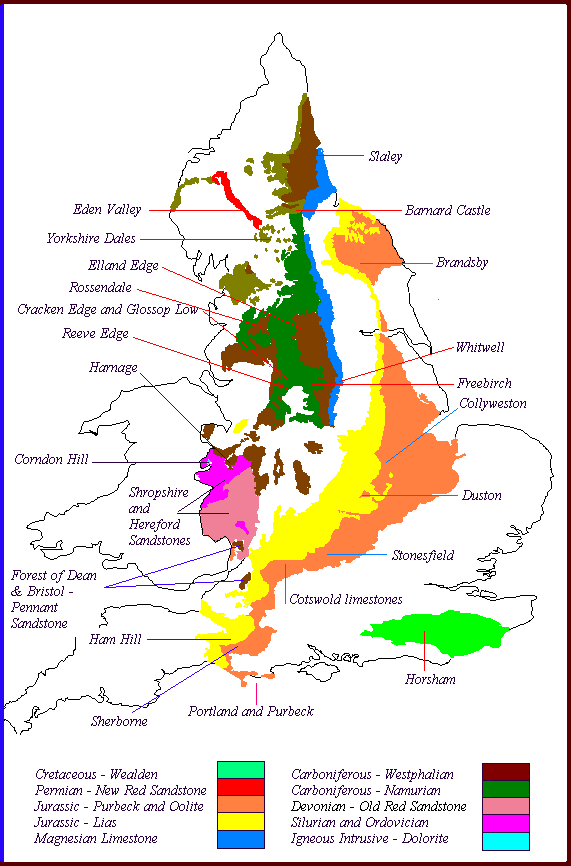
Weathering: The definition of weathering according to the Mirriam Webster dictionary : "the action of the weather conditions in altering the colour, texture, composition, or form of exposed objects specifically : the physical disintegration and chemical decomposition of earth materials at or near the earth's surface. There are three types of Weathering":
1. Mechanical
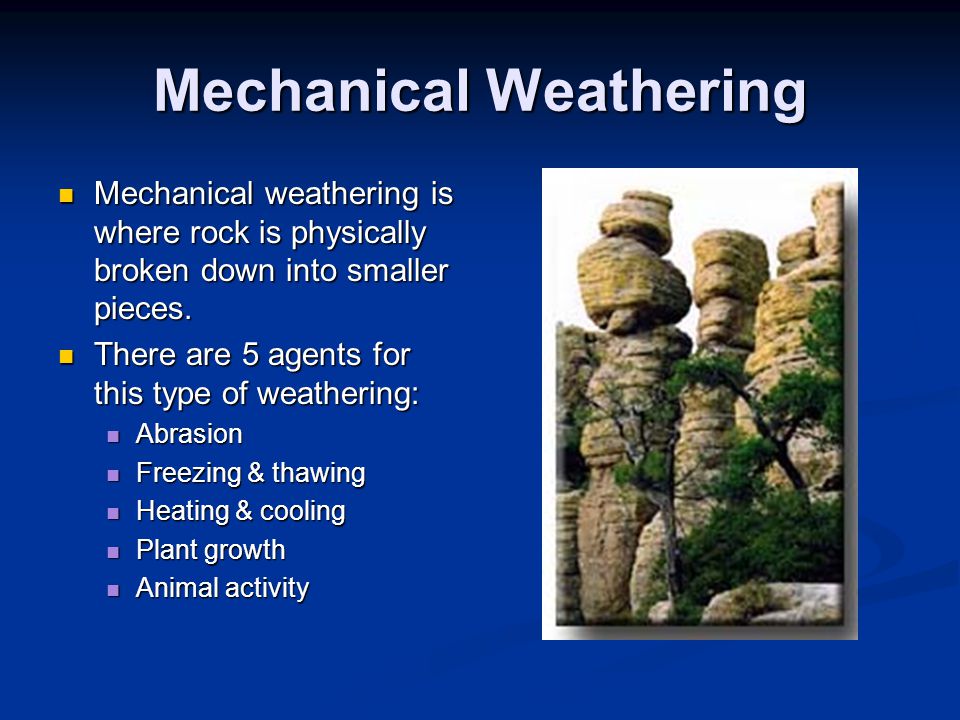
2. Chemical
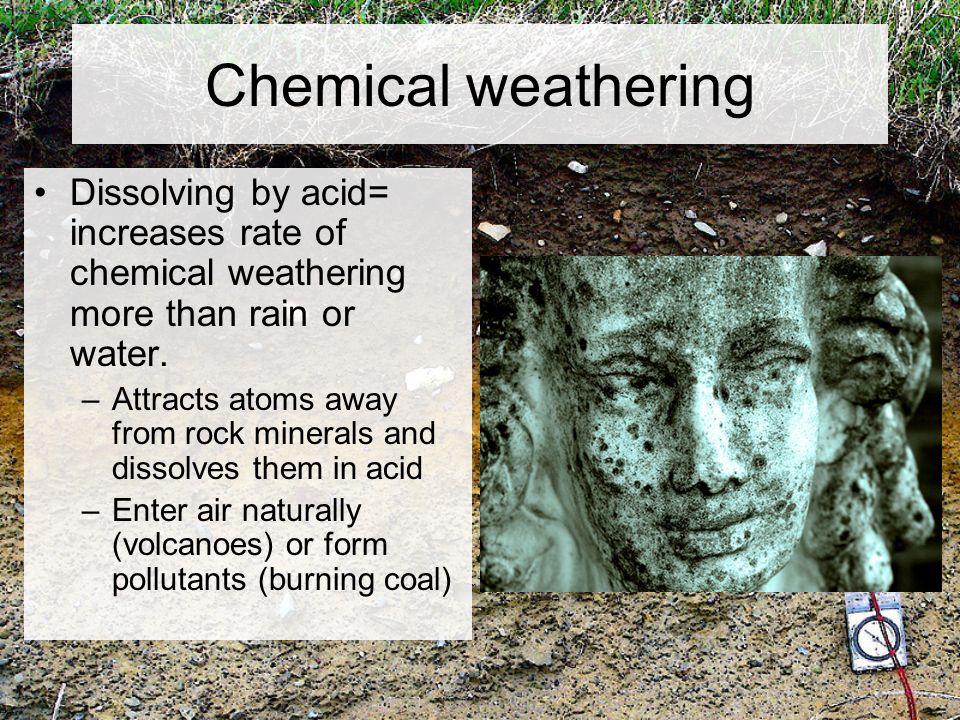
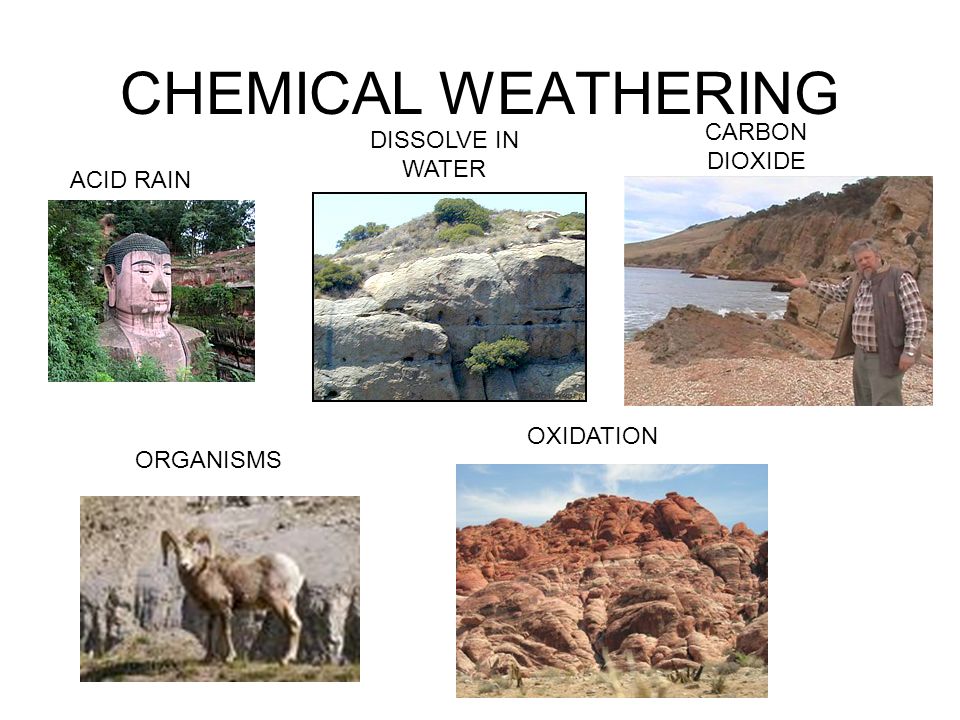
3. Biological

A lot of research has been undertaken in Sweden on the weathering effects on Sandstone. It was found that "The surface concentration of sulphur is highest at ground level and at rain-sheltered positions. Chemical and sulphur isotope data indicate that the stone decay to a large part may be attributed to anthropogenic sources like acid deposition and car traffic". This contradicts some views that because Sandstone is composed (usually) of quartz and feldspar particles. Neither are soluble in the acids present in acid rain!
![]()
![]()
So to the Questions: Please email me or message me the answers to the questions below. You may log the cache as a find straight away after doing so. I will contact you if I feel you haven’t visited GZ or your answers are poor.
1. Approximately what is the ratio of brick to sandstone used in the construction of this Church? Why do you think it is this ratio?
2. You will need to research this question on the web. The bricks used for the construction of the Church are yellow. Are they made out of local clay?
3. Describe the sandstone in terms of colour, textureand what it is like to touch.
4. At the front of the Church look at the sandstone columns. Are they in perfect condition? If not describe the areas that are not perfect and explain why this may be so.
5. Walk along Stratford road and look at the head sculptures on the wall of the Church. Counting from Earls Court Road end of the Church which number head is the most weathered? What type of weathering has caused this? and why do you think this head is more weathered than the rest?
6. Optional but desirable. Please take a photo of yourself or your GPS at the front of the Church including the large black clock on the wall.
Thanks for visiting
If you would like to expand to this series please do, I would just ask that you could let Sadexploration know first at churchmicro@gmail.com so he can keep track of the Church numbers and names to avoid duplication.
There is also a Church Micro Stats and Information page, which found via the bookmark list.
Reference Sources:
https://www.geolsoc.org.uk
https://en.wikipedia.org/wiki/Sedimentary_rock
https://rocks.comparenature.com/en/granite-vs-sandstone/comparison
https://sciencing.com/difference-between-quartzite-granite-8594861.html
https://www.london.anglican.org/directory/st-philips-earls-court-road
https://londonist.com/2013/11/the-secret-history-of-the-london-brick
www.merriam-webster.com/dictionary/weathering